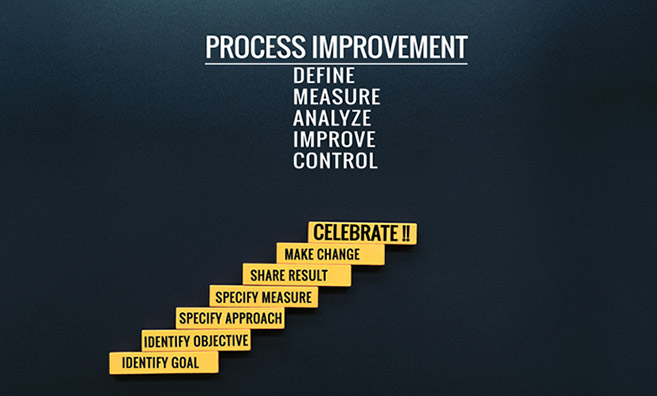Six Sigma Tools to Use During the Measure Phase of DMAIC

Last Updated October 12, 2020
By using Six Sigma, organizations bring proven tools and techniques to reduce variation, reduce defects and make operations more effective. The Six Sigma methodology uses the acronym DMAIC, which stands for Define, Measure, Analyze, Improve and Control.
DMAIC provides a five-phase process for Six Sigma project teams to follow as they improve an existing process, product, or service. The five phases are:
- Define – Define the problem that needs solving
- Measure – Assess the extent of the issue and quantify it with data
- Analyze – Use a data-driven approach to find the root cause of the problem
- Improve – Put changes into place that eliminate the root cause
- Control – Maintain the gains you’ve made with the changes
Each phase comes with its own set of goals and tools used to achieve them. tools. In the first phase, Define, project leaders create a team, identify a problem and set a goal. The project manager chooses team members who bring the expertise needed to the project, and they begin to create a problem statement, define customer needs and requirements, and map out the process.
In the Measure phase, teams begin to delve deeper into data.
Tollgates for the Measure Phase
Each stage of DMAIC has a series of tollgates. These tollgates mark critical milestones that teams must achieve to be successful. As taught in Villanova University’s Six Sigma Green Belt course, in the Measure stage, there are three major tollgates.
- Establish the performance indicator identification, which specifies what teams will measure in a process. The focus is on finding the key performance indicators from as early in the process as possible.
- Create a data collection plan that clearly spells out the definitions and procedures for collecting data.
- Develop a baseline performance measure that shows how well the company is currently doing, which helps illustrate the importance of the project. The goal is Six Sigma, or 3.4 defects per million opportunities.
Some of the key tools used during the Measure stage include the following. Keep in mind that not every Six Sigma project uses these specific tools. Six Sigma practitioners should use the tools that work best in each situation to achieve the tollgate milestones.
Data Collection Plan
Everything flows from this plan in the Measure phase. It’s one of the most important (and longest) phases in DMAIC. Organizational leaders will make decisions based on the analysis of data collected in the Measure phase. It’s crucial to collect accurate data on current performance.
A data collection plan contains specific instructions on what data will be collected. It also details who does the collecting, and where and how they do it. This ensures that the data collected is clean, accurate and pertinent to the problem the team is trying to solve.
Capability Analysis
This establishes a framework for assessing whether the current operation is meeting specifications. Capability analysis provides a statistical measurement of the variability in a given characteristic of a process. It’s key because reducing variation is one of the main goals of Six Sigma.
Pareto Chart
A Pareto Chart is a cause analysis tool. It represents statistics in a bar graph, with the length of bars representing the frequency of errors and the costs in time and money. The longest bars are typically on the left with the shortest on the right. A Pareto Chart is especially useful for analyzing the frequency of errors, or for focusing on one specific area if the team is dealing with multiple problems.
Check Sheets
The collection of data can get out of control quickly if not properly tracked. As taught in the Lean Six Sigma Black Belt course, Check Sheets track the amount and type of data collected, providing a convenient place for all team members to know what data they have as they build a performance baseline.
In using these tools, teams seek to collect data on performance and stability of the current process. They also want to validate the data, how it is measured and determine the capability of the process.
Data collection for the Measure phase is a long, involved process. But the above tools can help manage the process better. Clean data is critical to the next phase of DMAIC, Analyze, where teams begin to identify the root causes of problems in a process.
If you are currently leading or aspire to assist or manage a Six Sigma project, Villanova’s Certificate in Lean Six Sigma program can help teach the ins and outs of DMAIC methodology and how to identify and apply Six Sigma tools to your organization’s specific circumstances.




